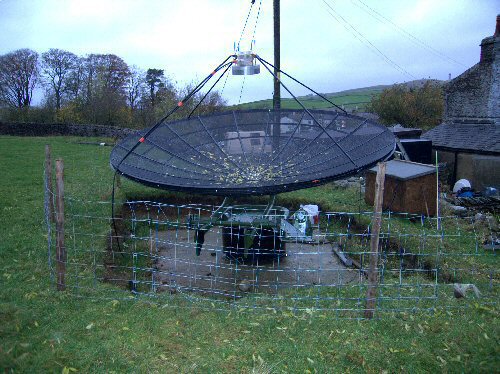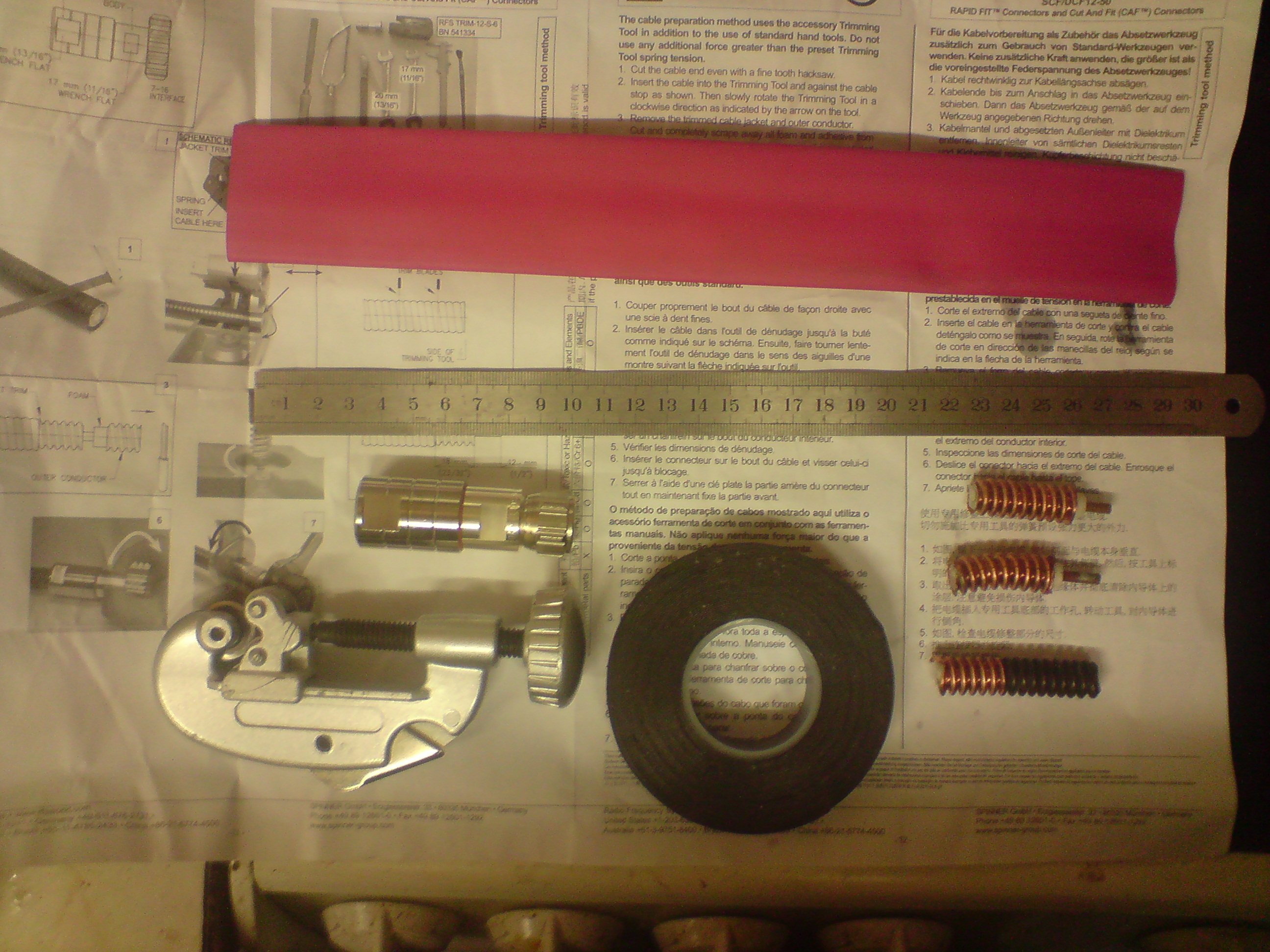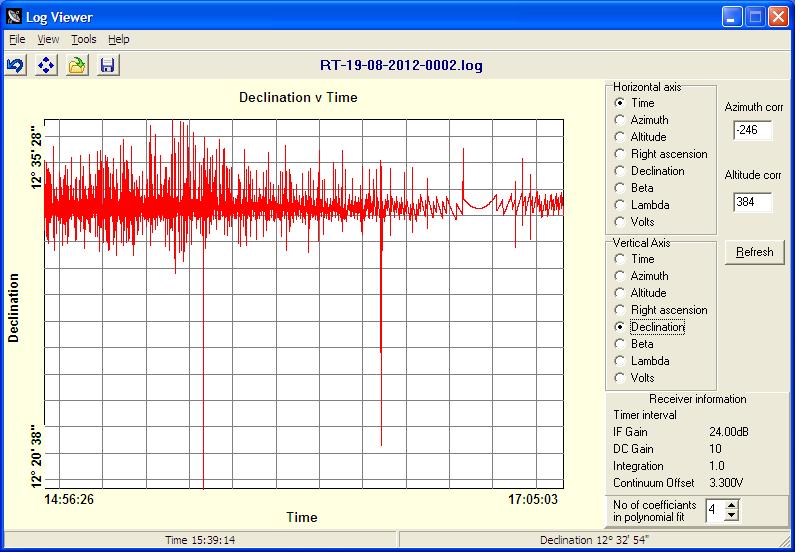wwws.3peaks.org.uk
Telescope
1. 144inch (3.7m) CKD 12 Antenna. F/D ratio 0.4. Focal distance 56 1/8inches 142.6 cm.
2. Radio Astronomy Supplies 21cm horn with choke ring.
3. Radio Astronomy Supplies low noise amplifier, 0.38dB nf.
4. 22m Celflex semi rigid cable.
5. Azimuth motor 24v widscreen wiper motor through 2400:1 gearing.
6. Azimuth position feedback through 15bit shaft encoder, Sick Stegmann ARS60.
7. Circuit board for reading RS422 from indoor antenna control computer, also provides control and conmmunications for azimuth H-bridge motor controller and shaft encoder RS422 communications. PCB manufactured by PCB-POOL.
8. Altitude motor 24v widscreen wiper motor through 2000:1 gearing.
9. Altitude position feedback through 15bit shaft encoder, Sick Stegmann ARS60.
10. Circuit board for reading RS422 from indoor antenna control computer, also provides control and conmmunications for aaltitude H-bridge motor controller and shaft encoder RS422 communications. PCB manufactured by PCB-POOL.
11. Radio Astronomy Supplies Spectra Cyber Hydrogen line spectrometer. Desktop computer for control.
12. Desktop computer for computation of astronomical positional data and control of antenna pointing via RS422 line.

There is a slew ring attached to the top of the cylinder for azimuth movement.

One of the most difficult tasks with any outdoor radio equipment is preventing the ingress of moisture.
Over many years I have come to place great faith in the following items for the feed.
Low loss cable with correct n-type connectors is of paramount importance. I was given some Cellflex 1/2" semi rigid cable. I used the original solder on connectors
but found that water penetration over time was a problem. There are three views of cellflex at the lower right of the image, the
bottom two show water contamination the upper one is a what the cable end should look like after use.
Correct preparation for outdoor use can be achieved at reasonable cost although the solderless n-type connectors are rather expensive at £15.00 each plus vat and delivery but we are looking for best results.
Cable trimming to fit connectors can be achieved using a plumbers pipe cutter, bottom left with the solderless N-type connector just above. Cut and trim the cable as the instructions require, slide onto the cable the heat shrink cover which should be long enough to overlap by a couple of inches either side of the connection and connect the N-type connector, if this is an in-line connection as one of mine was, connect and tighten them, wind the connection with self amalgamating tape, winding from the lowest point to the highest against any water flow covering a couple of inches of cable either side of the connectors. Slide the heat shrink over the SA tape, heat gun the shrink cover and you should have a connection which will be watertight.
I don't know if anyone else has noticed but some pop bottles (is that soda in the colonies) have heat shrink properties. Experiment with them, you may be pleasantly surprised
LNA to cable connection is a whole new problem but can be waterproofed surprisingly easily.
I use the following method:
Tracking.
Tracking is quite accurate as can be seen from the following 3 images.
This is RA over an approximate two hour period. The large excursions are actuall where the telescope stopped moving for a few seconds.
We have not been able to sort out exactly why this happens but as it does not really affect present use it has been made a low priority.
This is Declination over the same two hour period. Note the excursions once again.
Plotting RA against Dec for the two hour period and cropping the excursions.
The actual RA and Dec tracked RA 14 28' 29" Dec 12° 32' 02"
Log Viewer is available elsewhere on this site and the above data is available here as a .rar file or here for the raw data (3MByte).



